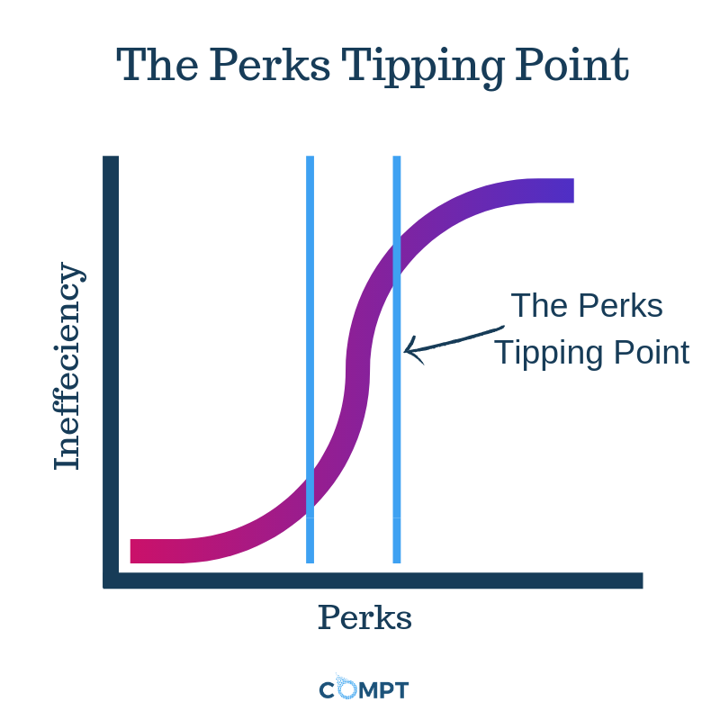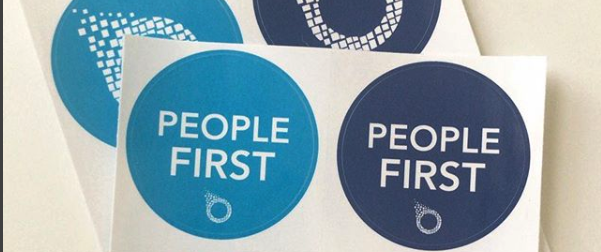A couple of days ago, I was sitting in on a conversation our VP of Sales was having with a People Operations thought leader. The HR leader was discussing her current problems with her perks program, and the conversation went like this:
VP: What are your goals with your perks program?
Her: Right now, we need to simplify our program. We need to decrease the administrative burden our HR team member deal with from managing all of the different perks and vendors. The management of them has become unruly lately.
VP: We’ve actually heard this before, it sounds pretty frustrating. What else is bothering you right now?
Her: We also want to simplify it for our employees too; we think that will lead to better adoption. We’re constantly adding more perks to solve for more people, and while the surveys we send internally indicate that people like what we’re adding, still not enough people are using them to make them worth it. We think a part of it is because the program is too confusing.
This wasn’t the first time I heard this kind of conversation from a people operations professional. In fact, we hear these same problems all of the time.
Does the conversation above sound familiar to you? If so, you might be experiencing your own perks tipping point.

What is the perks tipping point?
I first heard about the term tipping point in Malcolm Gladwell’s book The Tipping Point.
The phrase is defined as, “the point at which a series of small changes or incidents becomes significant enough to cause a larger, more important change.”
It signals an inflection point. A point in time where everything is normal, and then you wake up one day and BAM!, everything is different.
As it relates to perks, it’s the point in time when everything you were doing to offer perks was manageable, and overnight becomes overwhelming and unmanageable.
Does this sound familiar? Here are some other ways you can tell you have reached a tipping point:
- Your company’s perks grown to the point where it's too difficult to manage all of the vendors.
- You’re regularly answering questions about what's offered, how to redeem the perks, and taking suggestions for new ones, more often than you can keep up with.
- The budget for perks has ballooned and now you’re being asked about adoption and ROI.
Common problem organizations face:
Within most organizations, the HR team is often one of the smallest teams and the problems you face are vastly different than the ones other departments face. So without anybody else to talk to, it can feel like you’re the only one feeling this pain.
We can tell you that based on our conversations, this is certainly an industry trend.
Ultimately, the biggest problem that arises with the perks tipping point is the issue with efficiency. It's inefficient for HR as well as employees. More perks means more vendors, more communication, more account logins, more questions, more management, more everything.
Preventing or reversing the perks tipping point:
You already have a lot on your plate; hiring, onboarding, exit interviews, team events, performance management processes, culture initiatives, employee questions, office moves to name a few.
So when you find yourself amidst the perks tipping point or approaching one, we want you to know what your options are.
Below are three suggestions as to how to prevent, or reverse, the perks tipping point:
1. Don’t offer perks, or stop offering them.
Just kidding, it’s not cool of us to mention this, especially in today’s current climate with such a low unemployment rate, a growing skills gap, and a labor force that wants perks. While this isn’t a real option, it’s worth at least acknowledging.
2. Build your perks program from scratch
Sometimes you just have to claim bankruptcy and start over from scratch. This option is an especially appealing one if you haven’t built up an on-site adult Disney World for your employees. If this is a route you’re interested in, we built a comprehensive guide to taking you through every step of the process of building a world-class perks program.
3. Re-design the perks program around today’s innovative practices.
While it can be scary, trying something new often resonates with employees. After all, many of your team members are encouraged to innovate within their roles, and they expect other departments to do the same. According to a recent industry study, 48% of employees weigh innovative company benefits and perks in their decision to find their next job (Snacknation, 2018). A little innovation can go a long way to attracting more candidates to your company.
One major innovation happening with employee perks is around perk stipends. Instead of trying to offer employees the kitchen sink, which leads to an overwhelming administrative burden, perk stipends (or lifestyle spending accounts) help you put money in the hands of employees so they’re able to purchase the perks that are most relevant to them and their always-evolving needs.
Lifestyle spending accounts flip the traditional model of purchasing perks from a HR-owned process to a collaborative one. HR sets the parameters of these programs like spending categories and budgets, and then employees purchase what makes sense for them.
This transition from HR-led to HR&Employee-led simplifies your current perks strategy, eliminates the burden on employees and HR, and ensures each dollar spent on perks is used in a meaningful way.
The perks program below is a real-world example of a perk stipend for health and wellness from one of our customers. We recorded 44 unique ways people spent their June health and wellness funds, with over 22 different gym memberships alone.

How could any HR team member develop an employee perks program which has this level of customization, flexibility, and meaning if they're using today's current model. With lifestyle spending accounts, companies can offer more flexibility without any of the complexity.
Want to learn more about Lifestyle Spending Accounts, check out our Ultimate Guide to Lifestyle Spending Accounts.
Ultimately, our goal is to help our team members live fulfilling and impactful lives, and perks are a big way in which we can do that. But it’s no longer just about offering perks, that’s table-stakes today, it’s about the quality of the experience we deliver to our team members and how these perks help them live their best lives.
___
We believe there’s a better way for companies to put their benefits budget where their culture is which is why we started Compt. Compt is the new way to offer employee perks.
If you want to be more purposeful about your perks program, sign up for a demo to see what personalized perks could look like for your team, or learn more about perk stipends here.

Compt is the #1 employee stipends platform that gives your people the freedom to choose the lifestyle perks that are best for them and their always evolving needs, even when remote. Interested in learning how Compt might benefit your company? Consult with our team or request a demo.
